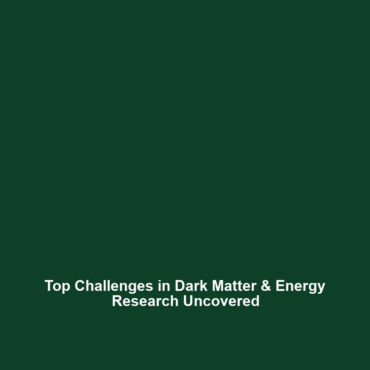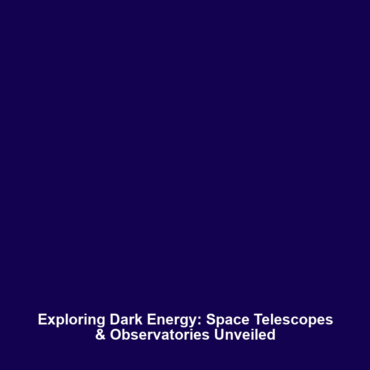The Cosmic Microwave Background (CMB) and What It Tells Us About Dark Energy
Introduction
The Cosmic Microwave Background (CMB) is a faint glow left over from the Big Bang, serving as an essential relic of the early universe. As a cornerstone of modern cosmology, the CMB provides critical insights into the structure and evolution of the cosmos, particularly regarding dark energy. Understanding the CMB is paramount, as it influences our comprehension of dark matter and dark energy, which together constitute about 95% of the universe’s total mass-energy content. This article delves into the significance of the CMB in unraveling the mysteries of dark energy.
Key Concepts
The Cosmic Microwave Background (CMB)
The CMB is a nearly uniform radiation field that fills the universe, created approximately 380,000 years after the Big Bang when protons and electrons combined to form hydrogen atoms. As the universe expanded, this radiation cooled, becoming the microwave background we observe today. The fluctuations in temperature of the CMB have revealed critical information about the early universe’s conditions and the formation of cosmic structures.
Dark Energy
Dark energy is a mysterious form of energy that permeates all of space and accelerates the expansion of the universe. Its discovery arose from observations indicating that the universe’s expansion is not just ongoing but accelerating. The CMB provides indirect evidence for dark energy by revealing the universe’s geometry and the density of matter, allowing scientists to infer the necessary properties of dark energy to explain the observed acceleration.
Applications and Real-World Uses
The insights gathered from the CMB regarding dark energy have significant practical applications, including:
- Extragalactic Astronomy: The CMB helps astronomers understand the large-scale structure of the universe and the distribution of galaxies.
- Cosmological Models: Data from the CMB is essential for refining models of cosmic evolution, aiding in predictions about the universe’s fate.
- Technology Development: Techniques developed for CMB analysis drive innovations in signal processing and precision measurement.
Current Challenges
Despite its importance, several challenges remain in studying the Cosmic Microwave Background and its implications for dark energy:
- Interference from cosmic sources complicates the interpretation of CMB data.
- Limited resolution and sensitivity of current instruments hinder our understanding of small-scale CMB fluctuations.
- Debates regarding the exact nature of dark energy and its properties continue to create uncertainty in cosmological models.
Future Research and Innovations
Ongoing and future research related to the CMB and dark energy is poised to drive significant discoveries:
- Advanced Telescopes: Upcoming missions, like the European Space Agency’s Euclid project and NASA’s Parker Solar Probe, aim to enhance the precision of CMB measurements.
- Improved Theoretical Models: Researchers are developing new theoretical frameworks to better understand the implications of CMB findings on dark energy.
- Artificial Intelligence: Using AI to analyze vast CMB datasets efficiently, uncovering hidden patterns and correlations.
Conclusion
The Cosmic Microwave Background remains a crucial piece in the puzzle of our universe, providing vital insights into the enigmatic nature of dark energy. Continued exploration of CMB data promises advancements in our understanding of dark matter and dark energy dynamics. For further reading on related topics, explore our articles on dark energy research and the mysteries of dark matter.









